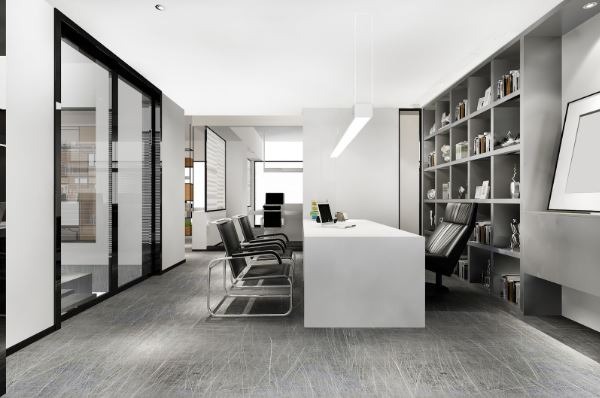In today’s fast-paced work environment, it’s easy to overlook the impact of office lighting on our health and well-being. However, research has shown that lighting plays a crucial role in our productivity, mood, and overall wellness. From natural light to artificial lighting solutions, finding the right balance is essential for creating a healthy and comfortable workspace. In this blog post, we will explore the importance of optimizing office lighting for health and wellness and provide practical tips on how to create an ideal lighting environment that promotes productivity and enhances our well-being.
The Importance of Proper Office Lighting
Proper office lighting is crucial for enhancing the design aspect and ensuring the health and safety of employees. It improves visibility, reducing the chances of accidents and hazards while also creating a pleasant and welcoming environment for both employees and clients. The specific lighting requirements in an office depend on the hazards and features present.
When choosing an office lighting design, it’s important to understand the characteristics of poor lighting and the qualities of effective lighting. Inadequate lighting can create an unfavorable impression with clients and fail to meet health and safety standards. It is also associated with health problems like eye strain, headaches, fatigue, and musculoskeletal disorders. These issues can significantly impact employees’ well-being, leading to increased absenteeism, reduced productivity, and workflow issues.
Proper office lighting also contributes to improved staff and client retention. A well-lit workspace not only creates a comfortable and productive environment but also shows the company’s commitment to employee well-being. This enhances job satisfaction and loyalty, reducing turnover rates and ensuring a motivated team. Well-lit offices also leave a positive impression on clients, increasing their satisfaction and loyalty, which benefits the overall success of the organization.
Three Types of Lighting for a Perfect Layout
The level of illumination chosen for an office depends on the specific environment, including factors like the type and brightness of computer monitors. It’s important to find a balance that suits the overall environment, as more lighting is not always better for office spaces. Consider using linear LED light fixtures to provide efficient and adjustable lighting solutions.
To assist business owners and companies in making informed decisions about lighting, the Occupational Safety and Health Administration (OSHA) has provided specific recommendations for selecting appropriate lighting levels in office workspaces. These recommendations take into account various factors, including employee comfort, productivity, and safety. Here are some of the key recommendations to create a well-lit and comfortable office environment:
- Arrange rows of diffuse lights parallel to the line of sight for workstations. This helps to evenly distribute light and minimize shadows, reducing eye strain and fatigue.
- Ensure that desks, tables, and other task areas have additional lighting. Providing localized lighting sources ensures that employees have sufficient light to perform their tasks effectively.
- Install blinds on exterior windows to prevent excessive brightness from affecting workers. Specifically, use vertical blinds for windows on the east and west sides of the building, as they can effectively control the amount of sunlight entering the workspace. For windows facing north and south, horizontal blinds can be used to manage the sunlight.
- Position computers in workspaces so that outside light is at a right angle to the screen. This reduces glare and reflections, making it easier for employees to read text and view images on their screens without straining their eyes.
- Opt for light colors with matte finishes for wall and ceiling paint to minimize light reflection, contrast, and glare. Light-colored surfaces help to reflect and distribute light more evenly throughout the office, creating a brighter and more visually comfortable space.
By following these recommendations, businesses can ensure that their office spaces are well-lit and conducive to employee well-being, productivity, and satisfaction.
Conclusion
In conclusion, optimizing office lighting is crucial for the health, wellness, and productivity of employees. Proper lighting not only enhances visibility and reduces accidents but also creates a pleasant and welcoming environment. Inadequate lighting can lead to health issues and negatively impact well-being and job satisfaction. By following recommendations such as arranging diffuse lights, providing localized lighting sources, managing sunlight with blinds, positioning computers correctly, and using light-colored surfaces, businesses can create a well-lit and comfortable office space. Investing in optimized lighting not only benefits employees but also contributes to staff and client retention, ultimately leading to a more successful organization.
